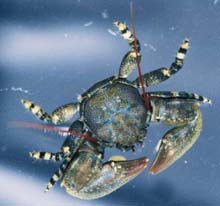Warmer ocean temperatures may be harming reproduction of the tufted puffin in western Canada and if global temperatures continue to increase, the species could be at risk, says a new study co-authored by a University of Alberta researcher.
Throughout the last two decades, uncharacteristically warm sea-surfaces have persisted near Triangle Island–off the coast of British Columbia–a haven for these birds. Researchers have been studying the reproductive performance of tufted puffins there si
Science fiction writers and movie-makers have imagined a world completely covered by an ocean, but what if one really existed? Would such a world support life, and what would this life be like?
ESA could make science fiction become science fact when it finds such a world, if the predictions of a group of European astronomers are correct. The ESA mission Eddington, which is now in development, could be the key.
At the recent ESA co-sponsored ’’Towards Other Earths’’ c
New report points out the high ecological and social costs of farming
Providence, RI – SeaWeb, an ocean conservation organization, today released its report, “What Price Farmed Fish: A Review of the Environmental and Social Costs of Farming Carnivorous Fish,” authored by Michael Weber, a marine conservation consultant. This timely report examines the impacts of farming salmon and warns that the trend toward farming additional carnivorous fish species, including tuna, cod, and halibut
Study clarifies key chemical reaction in atmosphere
While a breeze over the ocean may cool beach goers in the summertime, a new scientific study has revealed that tiny sea salt particles drifting into the atmosphere participate in a chemical reaction that may have impacts on climate and acid rain.
The research, published in the July 3 online issue of Science Express, could have substantial implications for increasing the accuracy of climate models.
The study by scienti

Science has a way of forcing us to reexamine some of our basic assumptions about nature. Consider the following statement: Animals that thrive in high temperatures are more likely to survive global warming than those that are less tolerant to heat. While this conclusion may seem obvious, a new study in the journal Science finds that the opposite may be true.
In an experiment published in the July 4 edition of Science, Stanford University postdoctoral fellow Jonathon H. Stillman examined th
The discovery that an ocean ridge under the Arctic ice cap is unexpectedly volcanically active and contains multiple hydrothermal vents may cause scientists to modify a decades-long understanding of how ocean ridges work to produce the Earth’s crust.
The new results, which come from a study of the Gakkel Ridge, one of the slowest spreading ridges on Earth, have broad implications for the understanding of the globe-encircling mid-ocean ridge system where melting of the underlying mantle